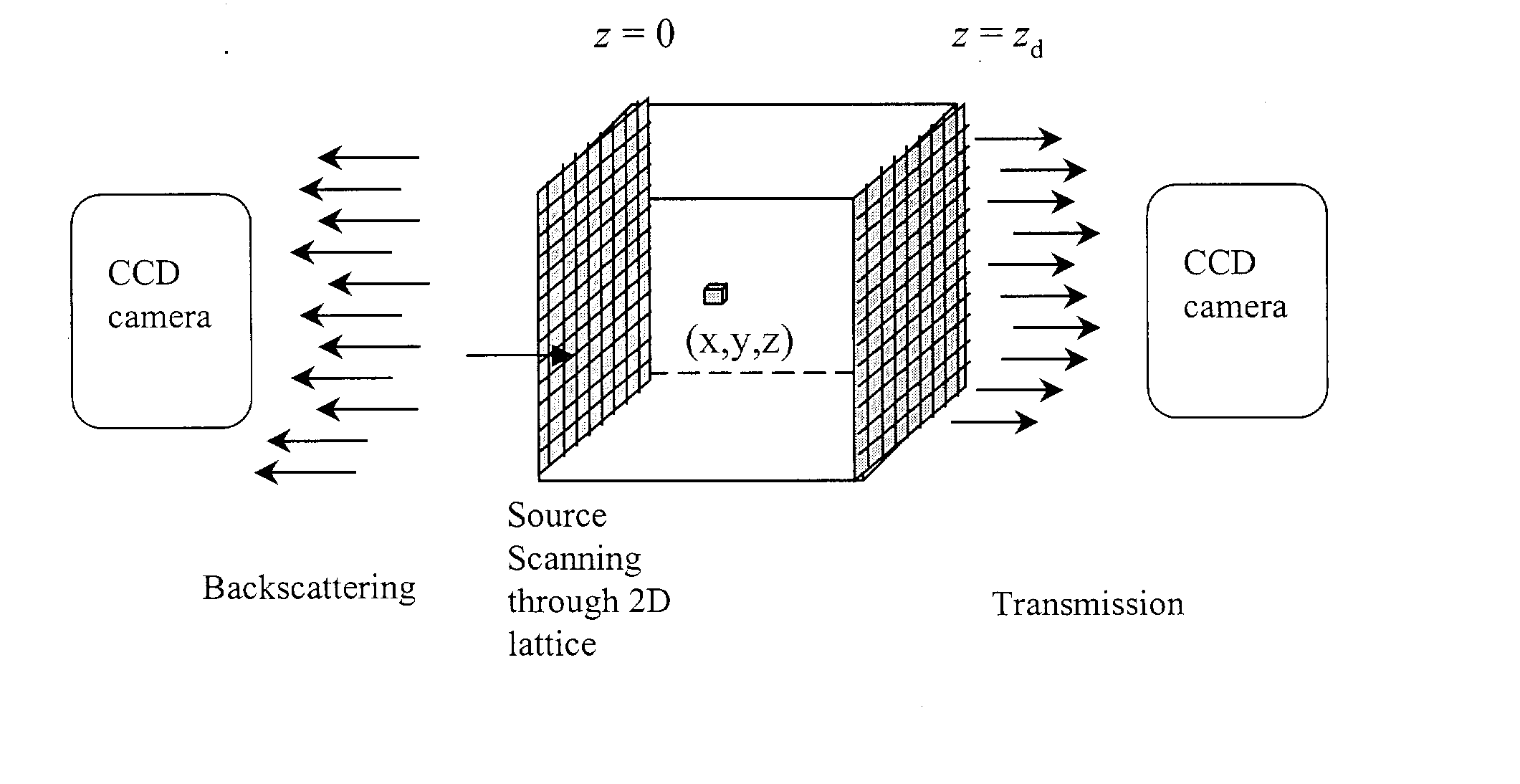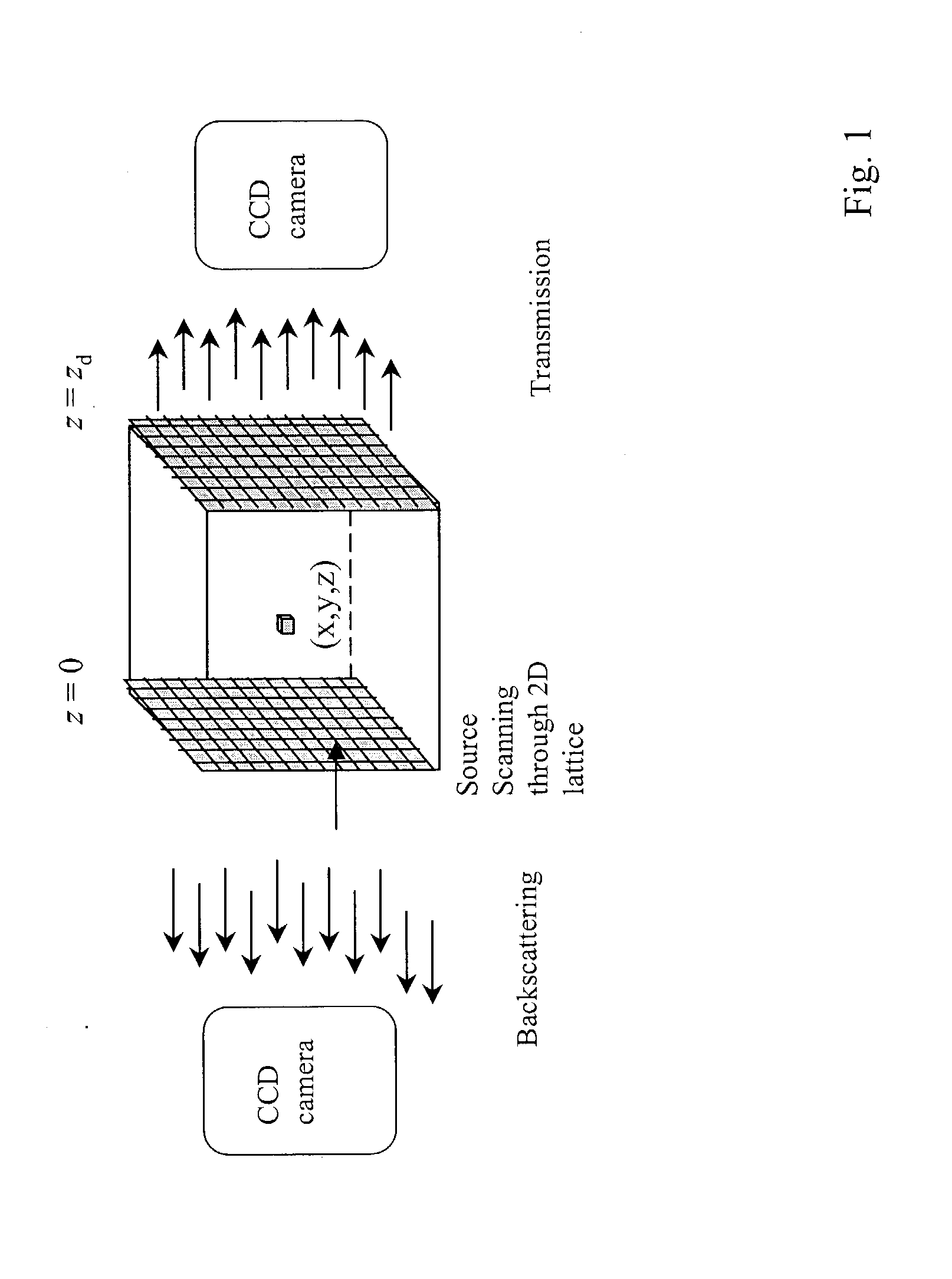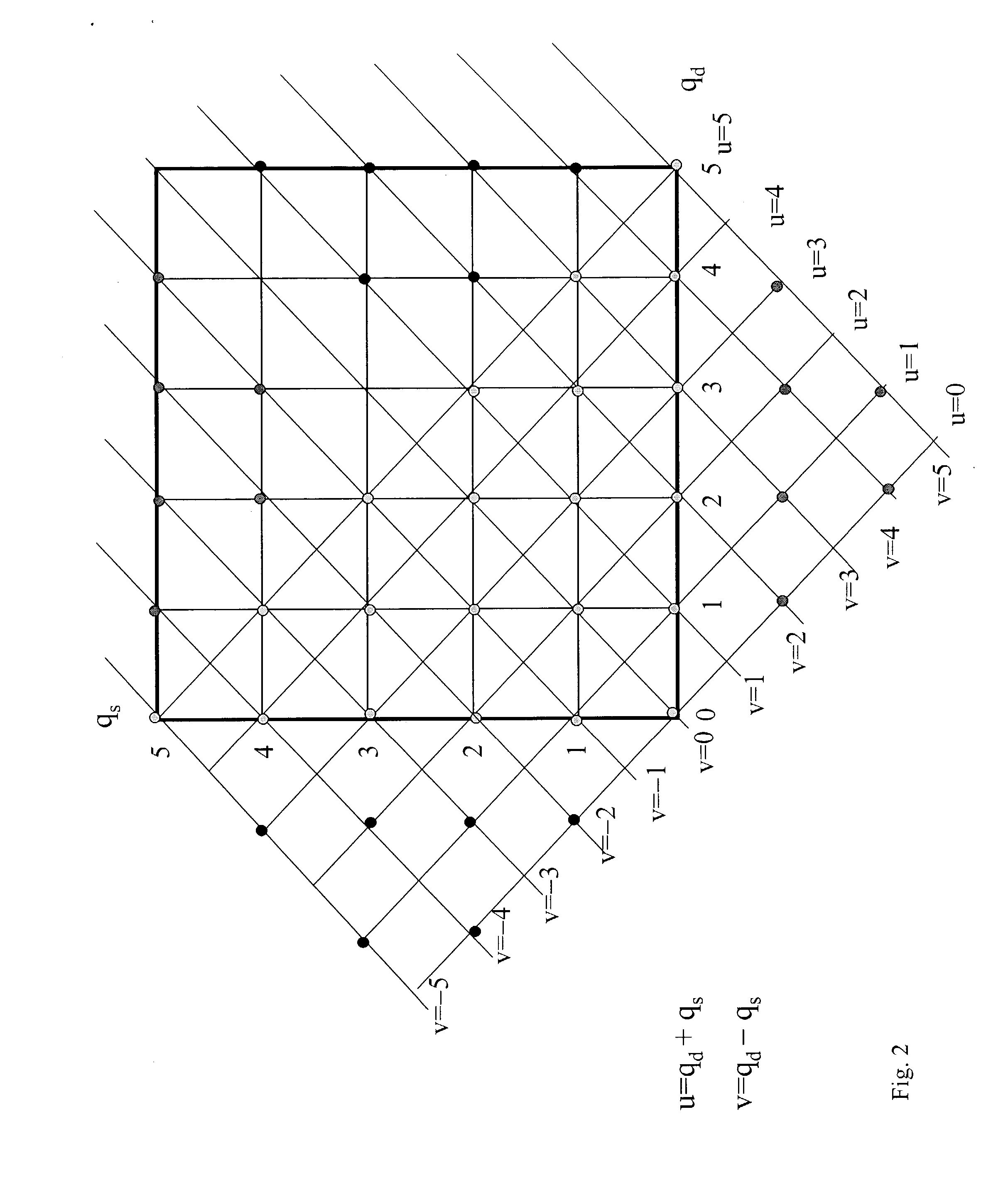Hybrid-dual-Fourier tomographic algorithm for a fast three-dimensional optical image reconstruction in turbid media
a three-dimensional optical image and hybriddual-fourier technology, applied in the field of hybriddual-fourier inverse algorithm for fast three-dimensional (3d) tomographic image, can solve the problems of difficult detection of objects inside, diffusive light propagation, and object inside that is not detectable using conventional imaging methods
- Summary
- Abstract
- Description
- Claims
- Application Information
AI Technical Summary
Problems solved by technology
Method used
Image
Examples
Embodiment Construction
[0063] The present invention is directed to novel optical tomographic system and method for imaging hidden objects in highly scattering turbid media. Referring now to FIG. 4, a block diagram illustrates an optical tomography system in accordance with one aspect of the present invention. It is to be understood that the block diagram depicted in FIG. 4 may also be considered as a flow diagram of a method for imaging objects in turbid media in accordance with the present invention. The system 10 includes an illumination source 12, step by step, shining (direct scanning or using optical fiber) through a two-dimensional array on the plane surface of the turbid medium 30 in parallel geometry, or through around the cylinder surface of the turbid medium 30 in cylinder geometry, and illuminating the turbid medium 30. The illumination source 12 is a laser that emits a continuous wave, or a frequency-modulated light, or ultrashort light pulses (e.g., fsec, psec, and nsec pulses) having wavelen...
PUM
 Login to View More
Login to View More Abstract
Description
Claims
Application Information
 Login to View More
Login to View More - R&D
- Intellectual Property
- Life Sciences
- Materials
- Tech Scout
- Unparalleled Data Quality
- Higher Quality Content
- 60% Fewer Hallucinations
Browse by: Latest US Patents, China's latest patents, Technical Efficacy Thesaurus, Application Domain, Technology Topic, Popular Technical Reports.
© 2025 PatSnap. All rights reserved.Legal|Privacy policy|Modern Slavery Act Transparency Statement|Sitemap|About US| Contact US: help@patsnap.com



